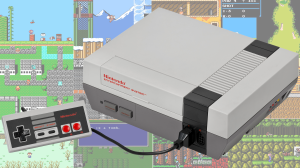
It’s hard to believe that it’s been 28 years since the Sega Genesis console originally hit store shelves. Back then, gaming was a much simpler time, and we had gotten so used to the 8-bit pleasures that the Nintendo Entertainment System had provided, we didn’t think it could get much better.
Videos by ComicBook.com
But then, Sega introduced us to glorious 16-bit, and the gaming world as we know it shook up, with a number of original and arcade titles that became instant classics. Of course, Nintendo would follow suit with the Super Nintendo two years later, but for a while there, Sega did indeed prove that the Genesis does what Nintendon’t.
So what makes a system and its games so significant for its time? Well, sit back and enjoy the nostalgia as we discuss the ways that the 16-bit console shook up the game industry.
Arcade Ports Are Actually Good Ports

Back on the NES, most arcade ports were pretty average. Sure, Donkey Kong and other stuff by Nintendo were translated pretty well, but when it came to Teenage Mutant Ninja Turtles II: The Arcade Game and Contra, you could tell that some things needed to be changed (though the games were still quite fun to play).
Enter the Sega Genesis, which could produce nearly arcade perfect ports of a number of hits, including Midnight Resistance and Strider, both of which utilized 8 MB cartridges (pretty big for the time), as well as Ghouls ‘n’ Ghosts and the system’s leading pack-in, Altered Beast.
Nintendo would one-up the arcade port game with the SNES, particularly with Street Fighter II and Mortal Kombat II, even though the Genesis got its own versions of these. But for a while there, the Genesis was the system to own for arcade perfection.
Sonic the Hedgehog Proved To Be An Able Console Hero

At a time when Sega was looking for something to compete with Mario, it truly delivered, with a little help from the creative mind of Yuji Naka. Sonic the Hedgehog could’ve been a much different game, but it took a turn for the better and eventually became an instant classic. What’s more, it showed off the Genesis’ capability to handle “blast processing,” a big feature at the time considering that some SNES games were running into slowdown (like Gradius III and Super R-Type).
Sonic’s legacy would continue on with several memorable sequels, and the hero would live on for several years, returning in several new titles for Sega and other platforms. He’s still going fast today, with the just-released Sonic Mania, which is easily considered one of the year’s best games.
Co-Op Found Surprisingly Good Support

The NES had its fair share of two player games, but if you really want to see hardware that defines what co-op is all about, you only need to turn to the Sega Genesis and its many games. There were a number of titles that were single player, but also just as many that offered two-player shenanigans. Toejam and Earl became an instant classic with its split-screen play; Gunstar Heroes proved to be a blast with a fellow gunner in tow; and even Sonic the Hedgehog 2 had its moments with its competitive mode. But, really, it’s all about Streets of Rage 2 and plowing through enemy forces, then “accidentally” throwing your ally on their head, just because you can. Ah, friendly fire…
It Gave Sega A Massive Library Of Licenses

Sega had a number of properties it made for the Sega Master System, but since that didn’t sell, it didn’t really have the room to expand upon them like they wanted – in America, at least. But then came the Genesis, and the company was able to capture lightning in a bottle with a number of popular franchises. These include Streets of Rage, Golden Axe, Sonic the Hedgehog and so many others, which continuously find re-releases in packages and as separate digital releases. On top of that, the system was also the home to many sleeper hits, including Gunstar Heroes and Ristar, which continue to be beloved classics after all these years. In fact, Ristar recently saw a re-release on the mobile front, as part of Sega’s Forever package – and for free, to boot.
It Didn’t Hold Back When Nintendo Clearly Did

During the late 80’s and early 90’s, Nintendo was a company that was clearly established with family gamers in mind. That’s why games like Mortal Kombat ended up getting wiped a bit cleaner than expected, with toned-down fatalities and sweat instead of blood. Despite its arcade quality, people found themselves going with the grainy Genesis version instead. Why? The blood code unlocked all the carnage we’ve come to expect from the series. And that wasn’t all, as Sega continued to push the envelope with mature games like Eternal Champions and Night Trap. Sure, the politicians weren’t pleased, but the fans ate it up – and it led to a shift in the industry where it wasn’t just about the kiddos anymore.
BONUS: The Technology Was Innovative – But A Bit Weird

Sega liked to tinker with technology surrounding its Sega Genesis. Not only did we get an add-on that introduced CD technology, but also a 32X that boosted the visuals and opened the door to a new generation of gamers – even if the add-on itself wasn’t impressive. That’s not all, either. Virtua Racing for the Sega Genesis turned out to be a powerhouse, despite its high cost; and the Activator, as flawed as it was, served as a footprint for motion gaming’s era, which would follow years later with the Wii (and much better, dare we say). And then there’s the Menacer…well, hey, you can’t win them all. At least T2: The Arcade Game worked okay with it. At least we got Disney’s Aladdin!








